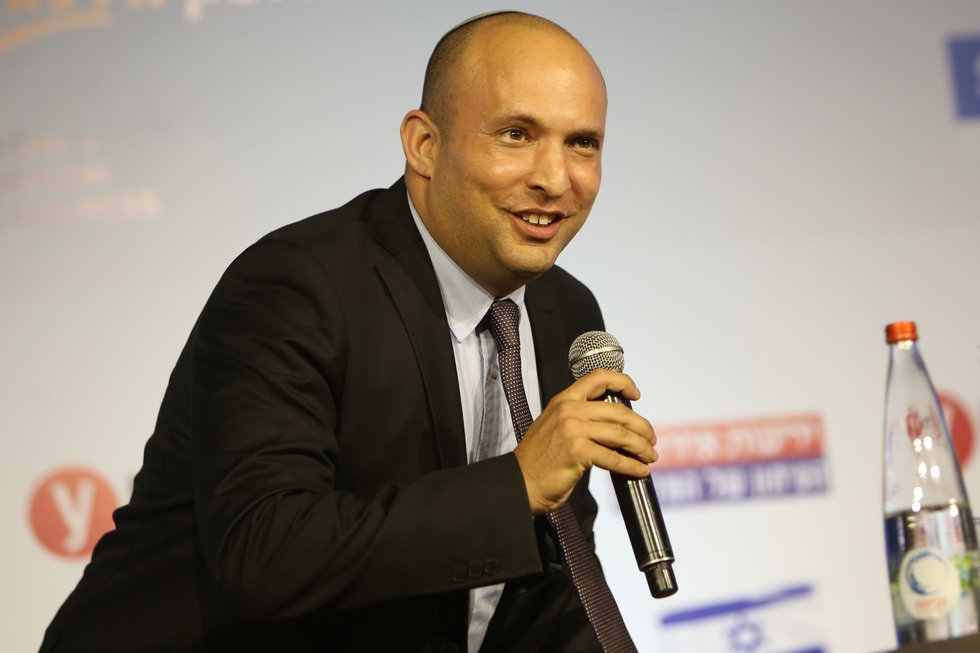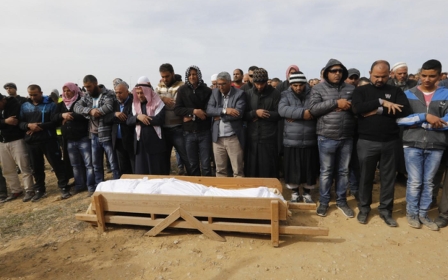Israeli defence minister approves 'Sovereignty Road' in occupied West Bank

Israeli Defence Minister Naftali Bennett has approved a major project in the occupied West Bank dubbed “Sovereignty Road”, which would separate Palestinian and Israeli settler motorists, and enable construction of settlements in a highly sensitive area, called E1, near East Jerusalem.
The project, given the nod on Monday, will connect the Palestinian neighbourhoods of Anata, Ezzaim, Hizma and Ar-Ram, north of the Israeli settlement Maale Adumim, to one another, ensuring that Palestinians and Israelis do not drive on the same road.
New MEE newsletter: Jerusalem Dispatch
Sign up to get the latest insights and analysis on Israel-Palestine, alongside Turkey Unpacked and other MEE newsletters
The Israeli government had planned to construct hundreds of settlement units in the area, which will link the settlements of Kfar Adumim and Maale Adumim with East Jerusalem in the Israeli-controlled Area C of the West Bank.
“It allows Palestinian vehicles to move without crossing inside the Maale Adumim bloc, near Jewish communities,” Bennett said in a statement, adding that the “Sovereignty Road” will enable the building of Jewish settlement units in area E1.
Currently, Palestinian residents of Anata, Ezzaim and Ar-Ram need to travel on the Maale Adumim settlement road to get from one neighbourhood to the other. All of these Palestinian neighbourhoods are part of the West Bank’s area C, and are surrounded by Israel’s separation wall.
Bennett said that the highway project, which was frozen for nearly a decade, will allow a continuity between the Israeli settlements in East Jerusalem, and ensure the avoidance of “unnecessary friction” between Palestinian and Israelis.
The Israeli government recently re-activated several frozen settlement projects, including the “Sovereignty Road.”
Last month, Israel ended a building freeze on some 2,610 illegal settlement units in East Jerusalem, a move that would isolate two Palestinian-majority areas of Beit Safafa and Sharafat.
The village of Beit Safafa and the Sharafat neighbourhood, both located just north of the Palestinian city of Bethlehem in the West Bank, were occupied by Israel in the 1967 Six-Day War, and are now home to around 25,000 Palestinian residents of East Jerusalem.
In 2014, the Israeli government approved plans to build settlement housing units in an area called Givat Hamatos, but the project was frozen during the administration of US President Barack Obama, as well as being condemned by the European Union.
Also in February, Netanyahu announced that he planned to authorise the construction of some 3,500 homes for Jewish settlers in the E1 zone.
All these projects would curtail any chance of dividing the holy city in any future talks around a two-state solution.
Middle East Eye delivers independent and unrivalled coverage and analysis of the Middle East, North Africa and beyond. To learn more about republishing this content and the associated fees, please fill out this form. More about MEE can be found here.





